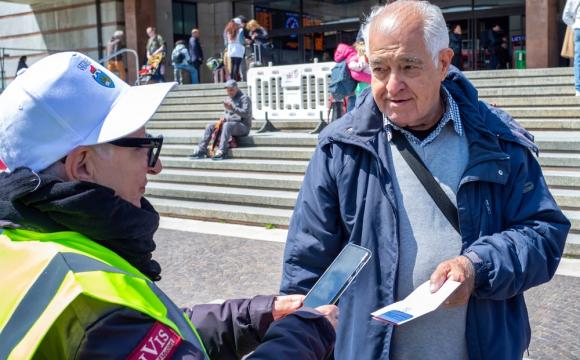The airport security facial recognition technology dubbed “FaceBoarding” debuted in Italy at Milan’s Linate Airport earlier this month, marking a new frontier in Italian flight expediency.
The tech allows travelers departing from Milan quick access to security controls, getting you to your gate and into your plane seat pronto. No need to show passports, ID cards or boarding passes once you’re registered in the system — though you do still need to have them on your person.
The biometric facial recognition software design, originally developed by the French company Thales, is being offered on a trial basis to all passengers 18 years and older departing from Milan Linate (LIN), to all destinations, as well as to those flying direct from Sicily’s Catania airport (CTA) to Milan Linate.
Armando Brunini, CEO of Sea Aeroporti — the company that manages Milan’s Linate and Malpensa airports — hopes to see FaceBoarding implemented at other Italian airports soon.
“We will see how the system works at Linate, but we certainly intend to take it to Malpensa,” Brunini told Italian press. “The service is available to all airlines that want to integrate their check-in and boarding systems with FaceBoarding.”
The main objective of replacing traditional boarding passes and ID cards with biometrics is twofold, Brunini says, aiming “to improve the overall safety of the process and to offer a more fluid and comfortable experience to passengers.”
Among the first airlines to sign up for Italy’s FaceBoarding program are Italian flag carrier ITA Airways (formerly Alitalia) and Scandinavian Airlines or SAS, Denmark’s, Norway’s and Sweden’s official carrier. While both airlines were involved in previous tests, the trials were unexpectedly interrupted in 2020 as the Covid-19 pandemic took hold.
How FaceBoarding works
To use FaceBoarding all you need to do is check-in (either online, via a mobile device or at the airline counter), then go to designated kiosks at a participating airport to register. You can opt to sign up for a single flight or all flights through December 2025.
To complete your registration, you’ll need to consent to sharing your personal data, then scan your legal travel documents (a passport or electronic government ID) and your boarding pass using the machine’s reader. Look straight into the camera and then proceed directly to the FaceBoarding-specific lanes. Semplice!
Many travelers feeling squeamish with personal data and privacy concerns should know that participation in FaceBoarding is completely voluntary. Those not wishing to use the technology can still go through security checkpoints and gates the old-fashioned way. Read more about how it all works at Linate here.
Extra tips
-
Habitually running late? FaceBoarding allows you to arrive at the airport much closer to the time of departure (though you probably shouldn’t tell yourself that).
-
A mobile app is currently in development and is expected to be available for download on both Android and iOS devices sometime in June 2024. This will allow pre-registration for the service from any smartphone or device — easily completed from the comfort of your own home.
- Once registered with FaceBoarding, you won’t need to show travel documents at check-in, security checkpoints and boarding gates. The system will recognize your face, instantly authorizing you to fly.
- For those who opt for the “one flight” option, personal data will be saved in the system for only 24 hours, so the next time you fly, you will need to register all over again. Passengers who register for the entire program will only need to scan their boarding passes at the kiosk on the day of your next flight.
Other biometric technologies are expected to roll out in select airports across Europe soon.













